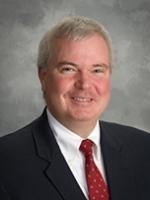Highlights
-
U.S. Court of Appeals for the Sixth Circuit says predictive dialers that create and call a stored list of phone numbers are subject to TCPA
-
This makes the third federal appeals court to reach this holding so far, across the country
-
Human involvement in creating lists of numbers to call or making the calls should be considered to help ensure compliance with TCPA
The U.S. Court of Appeals for the Sixth Circuit, in Allan v. Pennsylvania Higher Education Assistance Agency, became the third federal appeals court to expand the scope of the Telephone Consumer Protection Act (TCPA) to include predictive dialers that create and call a stored list of phone numbers.
In doing so, the Sixth Circuit gave this broader interpretation of the TCPA’s scope a 3-2 advantage among federal appeals courts over a competing, narrower interpretation. As a result, anyone using a predictive dialer needs to be especially vigilant to ensure that the manner of use of the predictive dialer is not prohibited by the TCPA.
The TCPA bars the use of an automatic telephone dialing system, or an ATDS, to make unconsented-to calls or texts; the penalty for doing so is $500 per violation or $1,500 per knowing violation. The challenge is the vexing definition of what is an ATDS, which has confounded the Federal Communication Commission (FCC) charged with its interpretation, the TCPA charged with its enforcement, and the courts charged with deciding TCPA cases brought by call recipients.
Further, the statutory definition of an ATDS is “equipment which has the capacity–(A) to store or produce telephone numbers to be called, using a random or sequential number generator; and (B) to dial such numbers.” As the Sixth Circuit noted in Allan, any attempt to fashion a plain meaning solely from this definition, “has its problems…” and thus, has created a challenge in interpretation and enforcement.
The difficulty in interpreting this provision led the FCC to adopt two contradictory interpretations of what was an ATDS after a ruling in a 2018 case, ACA Int’l v. Fed. Commc’ns Comm’n – namely that: (1) a device qualifies as an ATDS “only if it can generate random or sequential numbers to be dialed” and (2) a device qualifies as an ATDS “even if it lacks that capacity” to generate numbers. In ACA, the U.S. Court of Appeals for the D.C. Circuit found that the FCC could adopt either interpretation but “could not consistent with reasoned decision making, espouse both competing interpretations in the same order.”
This meant that, according to Allan, either of those two competing interpretations were now “fair game” for courts seeking to interpret the definition of an ATDS.
The issue before the Sixth Circuit in Allan was whether the Avaya Proactive Contact system used in that case was an ATDS. The Avaya system created a daily calling list based on a stored list of numbers – not a randomly generated or sequential list of numbers. A person then created a daily calling campaign, but the Avaya system, which was a predictive dialer system, placed the calls. Upon detection of a voice answering the phone call, the system would connect the call recipient to an operator.
Following the ACA decision by the D.C. Circuit, prior to Allan, four Circuit Courts had considered which of the FCC’s two interpretations of an ATDS to adopt, and how that interpretation would effect a system, like the Avaya system, that makes debt collection calls from a stored list of numbers. Those four Circuit Courts had split evenly as to whether such a system was an ATDS subject to the TCPA – the Ninth and Second Circuits found that such a system was an ATDS covered by the TCPA, while the Seventh and Eleventh Circuits found that such a system was not an ATDS and therefore not covered by the TCPA.
In Allan, the Sixth Circuit agreed with the broader interpretation favored by the Ninth Circuit and Second Circuit making that position a majority position (for now).
At its core, the dispute as to how to interpret the statutory provision is the plain meaning and application of the phrase “using a random or sequential number generator.” The Sixth Circuit first considered an interpretation which applied that phrase to both “store” and “produce,” or as if the ATDS definition stated it applied to equipment with the capacity: “(A) to store [telephone numbers to be called, using a random or sequential number generator]; or produce telephone numbers to be called, using a random or sequential number generator; and (B) to dial such numbers” (bracketed language added for interpretation).
Though the Sixth Circuit acknowledged such an interpretation was grammatically correct, it rejected such an interpretation because of the “strained” or “superfluous” interpretation which that would be required to be given to the word “store” in such an interpretation. As a result, the Sixth Circuit declined to adopt this interpretation based on plain meaning.
The Sixth Circuit also considered a second plain meaning interpretation, under which “using a random or sequential number generator” would apply only to “produce.” To do so would interpret the ATDS definition as though it stated that it applied to equipment with the capacity to: “(A) to store [telephone numbers to be called]; or produce telephone numbers to be called, using a random or sequential number generator; and (B) to dial such numbers” (bracketed language added for interpretation). The Sixth Circuit found that this was also problematic, on a plain language basis, because it either required a significant modification to the text, or left “store” wholly unmodified. As a result, the court also rejected this interpretation.
The Sixth Circuit then followed the lead of the Ninth Circuit and looked to the other statutory provisions that were part of the TCPA’s autodialer ban to guide its interpretation. The Sixth Circuit found that the TCPA was intended to cover calls to recipients who were on a known list of phone numbers, based on the express consent exemption, which would only be necessary if listed phone numbers were otherwise covered by the TCPA.
The Sixth Circuit also found that legislative history supported a broad reading of the TCPA that sought to limit automated calls, not just the technology underlying the automated calls. Lastly, the Sixth Circuit rejected any concerns that an expansive definition of an ATDS would make all smartphones subject to the TCPA because, based on the D.C. Circuit’s decision in ACA that a device is an ATDS only if it actually is used as an ATDS.
A dissent in Allan argued for a third interpretation of the definition of an ATDS, namely “using a random or sequential number generator” applies to the phrase “telephone numbers to be called” rather than to “produce” and/or “store.” The majority rejected this interpretation as similar to the first interpretation which the majority had also rejected, and because it failed to explain why the statutory definition of ATDS would only apply to stored numbers to be called using a random or sequential number generator.
In light of this ruling, it is crucially important to evaluate any use of a predictive dialer to make calls. The consequences of failing to do so can be severe, as shown by the $176,500 damage award, to just two call recipients, in Allan. It is clear that making calls from a stored list cannot be counted on to shield the use of the predictive dialer from the scope of the TCPA. Instead, the TCPA can be avoided by using human intervention either to 1) create the list of numbers to be dialed, or 2) to actually cause the call to be placed.





 />i
/>i

